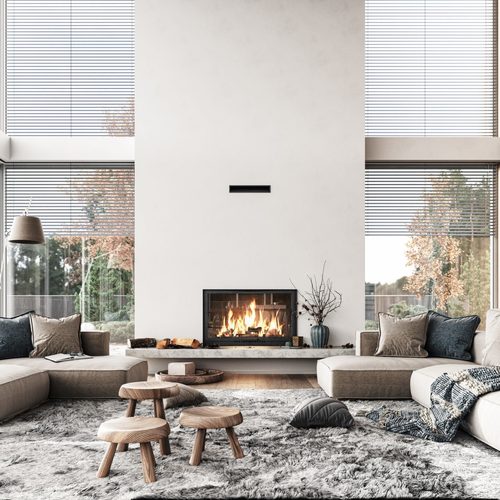When it comes to interior decor, texture is often an under-appreciated element. However, it actually determines how a room looks and feels! From warm and cosy to cool and contemporary, texture can play a vital role in your space.
Texture is all about the little elements that add to the appearance or consistency of a surface or material in a space.
Without texture in decor, the interior can easily fall flat. Creating texture is not just about how your decor and soft furnishings feel, but it’s also about the look. Using different materials to add interest is such a great way to breathe life into a room.
It’s crucial to look at the room as a whole and bring an area together with mixed materials for vibrancy and warmth. Texture can be found in the form of tactile objects like fabrics, wood and stone.
Let’s explore the power of texture in your own living space to create a warm and inviting environment.
Using texture as your tool
Texture refers to the visual and tactile surfaces of an object or materials in a space.
It can be smooth, rough, shiny, matte, soft, or hard.
Incorporating texture into your decor adds dimension and complexity to the design, making the space more visually appealing and engaging. Texture can also evoke different emotions and create a sense of balance and harmony in a room.
How to mix your materials
One of the most effective ways to introduce texture into a space is by combining different materials. Mixing materials such as wood, metal, glass, stone, fabric, and ceramics creates a rich tapestry of textures that adds visual interest.
For example, pairing a sleek glass coffee table with a plush velvet sofa and a rustic wooden side table creates a beautiful juxtaposition of smooth, soft, and rough textures that harmonise effortlessly.
What about the walls?
Walls provide an excellent canvas for incorporating texture into a decor space.
Consider creating a textured surface on a wall by adding graininess or using textured wallpapers, such as grasscloth or textured vinyl, to add depth and dimension. Another option is to use decorative wall panels made of materials like reclaimed wood or textured tiles. These features not only add visual interest but also serve as conversation starters.
It’s all about layering those textiles
Textiles play a crucial role in creating texture within a space. Experiment with different fabrics and patterns to add depth and variety. Layering throws, pillows, and rugs made from materials like wool, linen, or faux fur can instantly transform a room. Don’t shy away from mixing patterns and textures.
A chunky knit blanket draped over a leather chair or a patterned rug placed on top of a sisal carpet can create a cozy and inviting atmosphere.
Embrace & incorporate nature
Bringing natural elements indoors is an excellent way to introduce texture. Incorporate items like woven baskets, dried botanicals, or natural fibers like jute or rattan furniture. These organic textures create a sense of warmth, comfort, and a connection to nature. Consider adding indoor plants with different leaf textures to add life and vibrancy to your decor.
Reflecting on the power of light…
Texture can also be enhanced through lighting and reflections.
Strategically placed light fixtures can highlight textured surfaces and create captivating shadows. Consider using pendant lights with textured shades or wall sconces with intricate designs to cast interesting patterns on the walls. Mirrors and reflective surfaces can also introduce texture by bouncing light and creating visual interest.
Remember you can add texture into any room or space in your home. Embrace the transformative power of texture and take your decor to new levels!
ALSO SEE:
Feature Image: Getty Images

